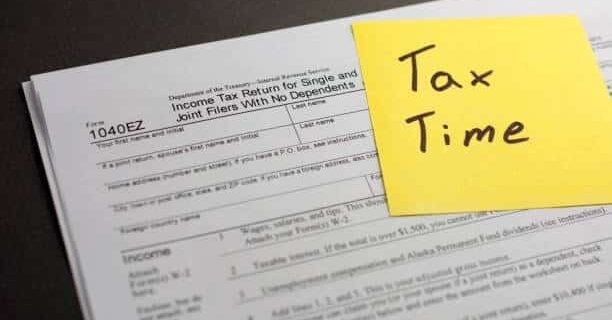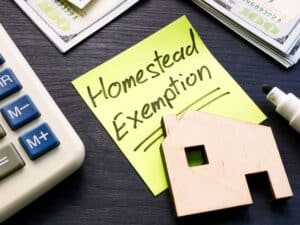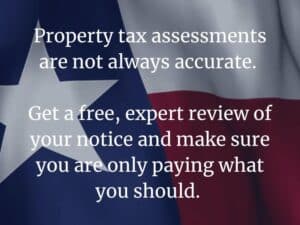Every spring, county appraisal districts mail out property value notices, sparking a wave of reactions among homeowners, business owners, and real estate investors. These notices, which detail your property’s assessed value for the upcoming tax year, directly determine your property tax bill—a significant expense that can amount to thousands of dollars annually. If your appraisal is inaccurate, you could be overpaying taxes due to an overvaluation or missing exemptions. With notices now arriving, it’s critical to review yours carefully, verify its accuracy, and take action if needed. This comprehensive guide explains how to evaluate your property value notice, spot errors, and challenge an unfair appraisal to ensure you’re not overpaying. By understanding the process, you can save money and gain peace of mind.
What Is a Property Value Notice?
A property value notice, often called an appraisal notice or notice of appraised value, is an official document sent by your county appraisal district. It informs you of:
- Assessed Value: The district’s estimate of your property’s market value, typically as of January 1, used to calculate your taxes.
- Taxable Value: The value after applying exemptions (e.g., homestead), which determines your tax bill.
- Property Details: Characteristics like square footage, lot size, and year built.
- Exemptions: Any tax breaks applied, such as homestead or senior exemptions.
- Protest Deadline: The date by which you must file a protest to challenge the appraisal, usually May 15 or 30–45 days from the notice date.
The assessed value is multiplied by the local tax rate (e.g., 2.5%) to determine your tax bill. For example, a $400,000 assessment at a 2.5% rate results in a $10,000 annual tax bill. If the appraisal is $40,000 too high, you’re overpaying $1,000 yearly. Verifying accuracy is essential to avoid such costs.
Why Checking Your Appraisal Matters
An inaccurate appraisal can:
- Increase Your Taxes: Overvaluations lead to higher tax bills, draining your budget.
- Miss Savings: Unclaimed exemptions (e.g., homestead) or errors (e.g., wrong square footage) cost you money.
- Affect Future Taxes: This year’s value often influences next year’s, locking in overpayments if uncorrected.
- Limit Appeal Options: Missing the protest deadline (typically mid-May) prevents you from challenging the appraisal until next year.
Conversely, verifying and correcting your appraisal can save hundreds or thousands annually. For instance, a $50,000 homestead exemption on a $400,000 home at a 2.5% tax rate saves $1,250 yearly. This guide provides steps to evaluate your notice and act if it’s inaccurate.
How to Evaluate Your Property Value Notice
Follow these steps to determine if your appraisal is accurate and take action if it’s not:
1. Review the Assessed Value
- What to Check: Compare the assessed value to your property’s fair market value—what it would sell for in a competitive market.
- How to Verify:
- Compare to Recent Sales: Look at comparable sales (comps)—similar properties in your area sold within the last 6–12 months. Use sources like county sales records, MLS data via a realtor, or reliable real estate sites (cross-checked for accuracy).
- Consider Market Trends: If local home prices are declining, your appraisal may not reflect current conditions. Check reports from Redfin or local realtor associations.
- Estimate Value: Use online tools like a Comparative Market Analysis (CMA) from a realtor or hire an appraiser ($300–$600) for a professional estimate.
- Example: If your home is assessed at $450,000 but three comps sold for $405,000–$415,000, the appraisal may be $35,000 too high, warranting a protest.
Tip: Focus on comps within a half-mile, with similar size, age, and features, as these are most persuasive to the appraisal district.
2. Verify Property Details
- What to Check: Ensure the notice accurately lists:
- Square footage (living area, not total under roof).
- Lot size.
- Number of bedrooms, bathrooms, and other features (e.g., garage, pool).
- Year built and condition (e.g., updated vs. outdated).
- Why It Matters: Errors like an overstated 2,500 sq ft vs. your actual 2,300 sq ft can inflate your appraisal by tens of thousands.
- How to Verify:
- Compare to your deed, survey, or blueprints.
- Visit the appraisal district’s website to view your property record.
- Contact the district to report errors, providing proof (e.g., a survey).
- Example: Correcting a 200-square-foot overstatement at $150 per square foot could reduce your value by $30,000, saving $750 at a 2.5% tax rate.
Tip: Measure your home or hire a surveyor if disputes arise over measurements.
3. Check for Exemptions
- What to Check: Confirm that all eligible exemptions are applied, such as:
- Homestead Exemption: Reduces taxable value for primary residences (e.g., $25,000–$50,000 off).
- Senior Exemption: Additional relief for homeowners over 65.
- Disabled Veteran Exemption: Partial or full exemptions for qualifying veterans.
- Agricultural Exemption: Lower valuations for qualifying farmland.
- Why It Matters: Missing exemptions increase your taxable value, costing you savings.
- How to Apply:
- Check the district’s website for eligibility and forms.
- Submit applications with required documents (e.g., proof of residency) by the deadline, often April 30 or with your protest.
- Example: A missing $50,000 homestead exemption on a $400,000 home at a 2.5% tax rate costs $1,250 annually.
Tip: Apply for exemptions immediately after buying a home or becoming eligible to maximize savings.
4. Assess the Need for a Protest
- When to Protest:
- The assessed value exceeds comps or your estimated market value.
- Property details are incorrect (e.g., extra bedrooms).
- Exemptions are missing or misapplied.
- Similar properties have lower assessments (unequal appraisal, allowed in some states like Texas).
- Why It Matters: A successful protest can lower your value, reducing your tax bill significantly.
- How to Decide:
- Estimate potential savings: A $40,000 reduction at a 2.5% tax rate saves $1,000 yearly.
- Weigh effort vs. reward: Protests require evidence but are often resolved informally.
- Example: If your $420,000 assessment is $30,000 above comps, a protest could save $750 annually.
Tip: File a protest even if your evidence isn’t fully developed, as you can refine it before the hearing.
5. Gather Evidence if Protesting
- Key Evidence Types:
- Comparable Sales (Comps): 3–5 recent sales of similar properties at lower values (see our blog post, “The Role of Comparable Sales in Property Tax Appeals”).
- Property Condition: Photos and repair estimates for issues like a leaky roof or outdated systems.
- Unequal Appraisal: Assessments of similar properties with lower values, found via the district’s database.
- Market Trends: Data showing declining local prices (e.g., from Redfin or local news).
- Errors: Proof of incorrect details (e.g., a survey showing correct square footage).
- How to Collect:
- Use the appraisal district’s website for comps and assessments.
- Work with a realtor for MLS data or hire an appraiser for a professional valuation.
- Take timestamped photos and get contractor estimates for condition issues.
- Example: Three comps at $395,000–$405,000, a $12,000 foundation repair estimate, and a 200-square-foot error support reducing a $440,000 assessment to $400,000.
Tip: Organize evidence in a binder with a summary, tables, and visuals (e.g., maps, charts) for clarity.
6. File a Protest if Needed
- How to File:
- Obtain the Form: Download from the appraisal district’s website or request by mail.
- Select Grounds: Common grounds include “value is too high” (market value appeal) or “unequal appraisal.”
- Submit by Deadline: File by May 15 or within 30–45 days of the notice, typically online, by mail, or in person.
- Pay Fees if Required: Some districts charge a small fee (e.g., $10–$50), waived if you win.
- What Happens Next:
- Informal Review: Meet with an appraiser to present evidence and negotiate a reduction.
- Formal ARB Hearing: If unresolved, present to an independent Appraisal Review Board (ARB) for a final decision.
- Example: Filing a protest for a $450,000 assessment, citing comps at $410,000, leads to a $40,000 reduction, saving $1,000 at a 2.5% tax rate.
Tip: See our blog post, “Navigating Your County Appraisal District: A Guide,” for detailed protest steps.
7. Prepare for the Protest Process
- Informal Review:
- Present your strongest evidence (e.g., comps, error corrections) in a 10–15 minute meeting.
- Be concise and data-driven, avoiding emotional arguments.
- Many protests are resolved here without a formal hearing.
- Formal ARB Hearing:
- Prepare a 5–7 minute presentation summarizing your evidence (e.g., “My comps show a $400,000 value”).
- Use visuals like tables or maps to compare comps or highlight errors.
- Bring extra copies of your evidence packet for the ARB and appraiser.
- Example: At an informal review, comps and a square footage correction convince the appraiser to lower your value from $430,000 to $400,000.
Tip: Practice your presentation and anticipate questions like “Why are these comps relevant?” or “How did you calculate repairs?”
8. Consider Professional Help
- When to Hire:
- High-value properties with large potential savings.
- Complex cases (e.g., commercial properties, unique homes).
- Limited time or expertise to gather evidence and present.
- Options:
- Property Tax Consultant: Handles protests, often on contingency (30–50% of savings). See our blog post, “How to Choose the Right Property Tax Consultant.”
- Independent Appraiser: Provides a professional valuation ($300–$600) for strong evidence.
- Example: A consultant reduces a $1M commercial property by $100,000 using MLS comps, saving $2,500 annually, with a $1,000 fee.
Tip: Weigh professional costs against savings; a $500 fee is worth it for $2,000 yearly savings.
Common Mistakes to Avoid
- Ignoring the Notice: Failing to review risks overpaying due to errors or overvaluations.
- Missing Deadlines: Protest and exemption deadlines (often May 15 or April 30) are strict, with no extensions.
- Using Weak Evidence: Old comps, unverified data (e.g., Zillow), or emotional arguments weaken your case.
- Overlooking Exemptions: Not applying for eligible exemptions costs savings.
- Not Verifying Details: Uncorrected errors (e.g., extra bathrooms) inflate future appraisals.
- Skipping Protests: Assuming a high value is final prevents potential reductions.
Real-World Example
Consider Maria, a homeowner whose notice shows a $470,000 assessment, but she believes it’s worth $425,000. She takes these steps:
- Reviews Notice: Finds the value high compared to recent sales and notes a May 15 protest deadline.
- Verifies Details: Spots an incorrect 2,700 sq ft (actual: 2,500 sq ft) on the district’s website.
- Checks Exemptions: Notices a missing homestead exemption, costing her $1,250 yearly.
- Gathers Evidence: Collects three comps sold for $420,000–$430,000, a $15,000 roof repair estimate, and five similar homes assessed at $415,000–$425,000.
- Files Protest: Submits online by May 10, citing market value, unequal appraisal, and errors.
- Informal Review: Presents comps, the square footage correction, and repair estimate, securing a $45,000 reduction to $425,000, saving $1,125 at a 2.5% tax rate.
- Applies Exemption: Files for a $50,000 homestead exemption, saving an additional $1,250.
Maria’s diligence saves $2,375 annually and corrects her record for future years.
Why Acting on Your Notice Is Critical
Your property value notice is your chance to ensure a fair appraisal and avoid overpaying taxes. A thorough review can uncover errors, secure exemptions, and justify a protest, leading to significant savings. For example, a $40,000 reduction or exemption on a $400,000 home at a 2.5% tax rate saves $1,000 yearly, compounding over time. Ignoring the notice risks locking in an unfair value, especially as appraisals often carry forward to future years.
Taking the First Step
When your property value notice arrives, review it immediately for accuracy. Compare the assessed value to comps, verify property details, and check for exemptions. Visit your county appraisal district’s website to access records, forms, and sales data. If the appraisal seems high or incorrect, gather evidence like comps or repair estimates and file a protest by the deadline (typically May 15 or 30–45 days from the notice). For complex cases, consider a property tax consultant to maximize savings.
For specific details, search online for “[Your County] Appraisal District” or contact their office for forms, deadlines, and resources. Act now to ensure your appraisal is accurate and keep your tax bill fair.
Disclaimer: Property tax laws and procedures vary by state and county. Always verify local rules with your appraisal district or a qualified professional. This guide is for informational purposes and does not constitute legal advice.






